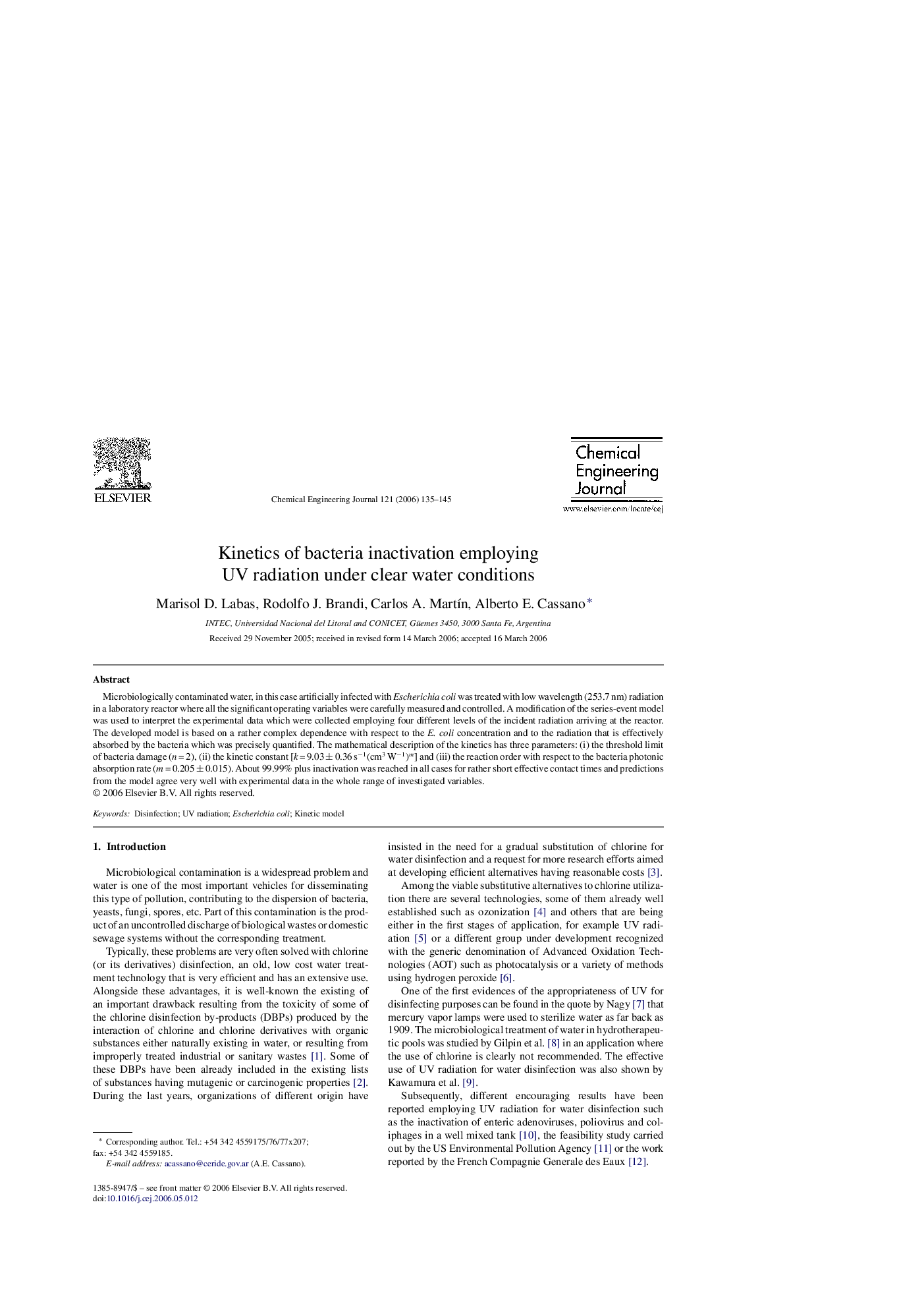| Article ID | Journal | Published Year | Pages | File Type |
|---|---|---|---|---|
| 154263 | Chemical Engineering Journal | 2006 | 11 Pages |
Microbiologically contaminated water, in this case artificially infected with Escherichia coli was treated with low wavelength (253.7 nm) radiation in a laboratory reactor where all the significant operating variables were carefully measured and controlled. A modification of the series-event model was used to interpret the experimental data which were collected employing four different levels of the incident radiation arriving at the reactor. The developed model is based on a rather complex dependence with respect to the E. coli concentration and to the radiation that is effectively absorbed by the bacteria which was precisely quantified. The mathematical description of the kinetics has three parameters: (i) the threshold limit of bacteria damage (n = 2), (ii) the kinetic constant [k = 9.03 ± 0.36 s−1(cm3 W−1)m] and (iii) the reaction order with respect to the bacteria photonic absorption rate (m = 0.205 ± 0.015). About 99.99% plus inactivation was reached in all cases for rather short effective contact times and predictions from the model agree very well with experimental data in the whole range of investigated variables.
